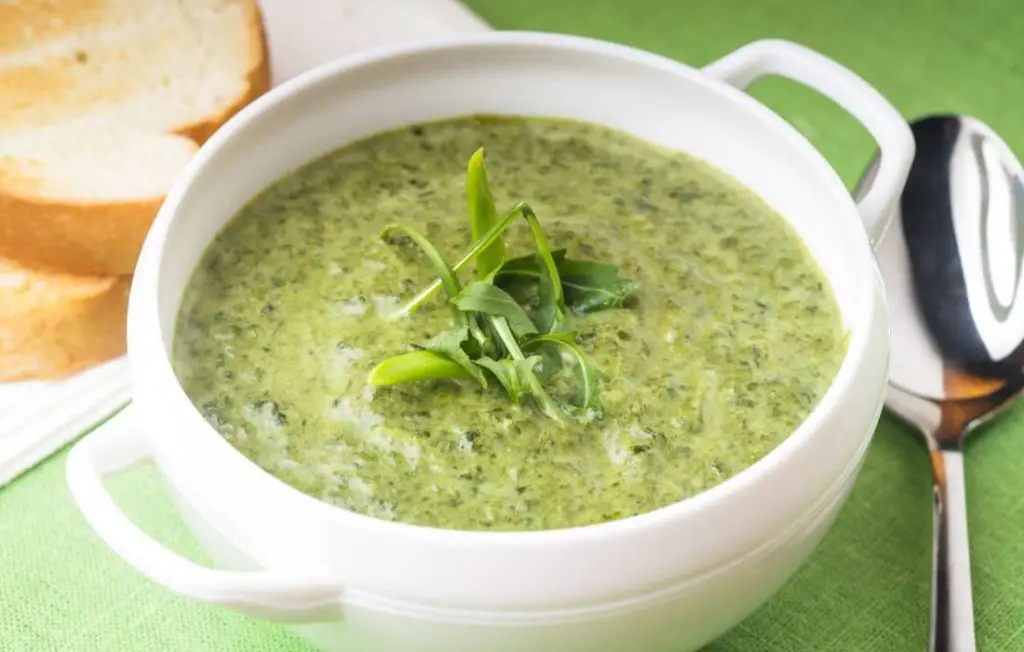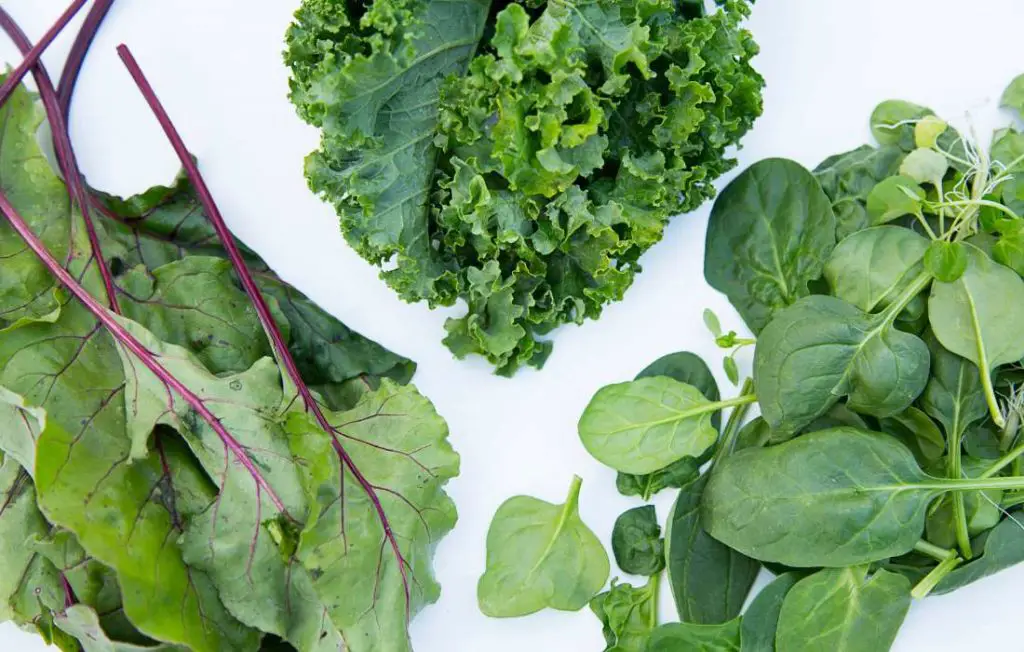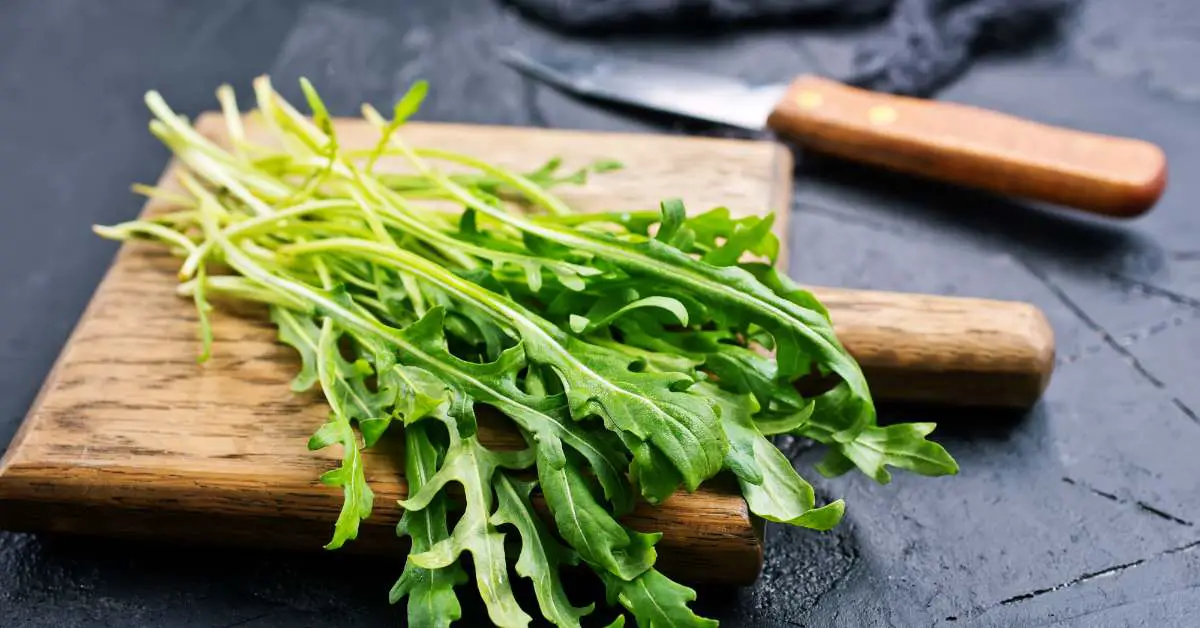Is arugula low histamine? If you have histamine intolerance, what you eat matters, as certain foods can increase your body’s histamine level. If you have problems breaking down histamine, these foods can trigger histamine intolerance symptoms.
But what about arugula? Is it safe to eat if you have histamine intolerance?
Let’s dive in and get to know arugula better! Arugula is a hip and happening leafy green that’s all the rage in the culinary world. But it’s also highly nutritious. You’ll find this little gem in loads of salads and dishes, and it adds a zesty, peppery kick that’ll wake up your taste buds.
This somewhat bitter leafy green goes by various names, including rocket or rucola. However, most people call it arugula. But no matter how you refer to it, arugula is a leafy superstar that brings a fresh and vibrant vibe to your plate or salad bowl.
You know what’s nifty about arugula? It’s versatile! You can toss it into a salad alongside other low-histamine vegetables and top it off with a low-histamine salad dressing or olive oil. Enjoy adding it to soups, sandwiches, and wraps too. You can even pile it high on a low-histamine pizza for extra taste and nutrients. Also, find out whether onions contain histamine.
Does Arugula Contain Histamines?
If you’re trying to add more leafy greens to your diet, arugula is not known to contain histamines and it also is not a histamine liberator, meaning it doesn’t trigger histamine release by mast cells.
Other low histamine greens include Romaine lettuce, collard greens, kale, watercress, Bok choy, and mustard greens.
Most leafy greens are low in histamine, although spinach is off the menu with histamine intolerance due to its higher histamine content.
So, replace the spinach in your spinach salad with arugula and kale, two low-histamine leafy greens that are also packed with nutrients.

Is Arugula Anti-inflammatory?
Arugula shares nutritional perks with other leafy greens, including such nutritional superstars as kale and Bok choy. How so?
For one, arugula is packed with phytochemicals that help fight inflammation, a phenomenon that affects you if you have histamine intolerance.
The most interesting of these are glucosinolates, (2,3) compounds with anti-inflammatory and anti-cancer activity.
The other big class of phytochemicals in arugula is flavonoids. A perk of arugula is that it may help counter the harmful effects of excess histamine.
You’ve heard of cruciferous vegetables, right? Arugula is a member of this nutrient-dense veggie family, along with other familiar names, like broccoli.
Vegetables in this class are rich in glucosinolates and flavonoids. So, arugula is not only low histamine but it could be a welcome and healthful addition to your plate if you have histamine intolerance.
Research shows that people who add lots of cruciferous vegetables, like arugula, that contain glucosinolates, have a lower risk of being diagnosed with certain cancers.
Eating a diet rich in these anti-inflammatory substances may also lower the risk of cardiovascular disease and metabolic syndrome. (2) Discover other low-histamine vegetables that are rich in nutrients.

Beyond Histamine: The Nutritional Benefits of Arugula
With only 10 calories per serving, you get nutrition that won’t expand your waistline when you eat arugula. Let’s look at key nutrients you get when you eat a serving of arugula:
- Vitamin C
- Vitamin K
- Calcium
- Magnesium
- Potassium
- Iron
- Folate
- Iron
Beyond the nutritional benefits of arugula, it contains a compound called erucin that blocks the proliferation of breast cancer cells in a laboratory setting. (1) It’s another reason to eat low-histamine leafy greens, like arugula. Also, find out about the histamine content of celery.
Arugula Is a Low-Histamine Leafy Green
The bottom line is you can safely add arugula to your plate if you have histamine intolerance. In fact, the anti-inflammatory compounds in arugula may help counter some of the negative effects histamine has on your body.
Despite its low histamine content, we’re all a little different. Do you take blood thinners?
If so, talk to your healthcare provider before adding arugula to your plate. Due to their high vitamin K content, some leafy greens can interfere with blood thinners. (4)
Enjoy Arugula on a Low-Histamine Diet
Leafy greens, like arugula, are packed with nutrition but know that they’re bitterer than some greens. So, you might want to combine it with a sweeter leafy green for balance.
You can reduce the bitterness by choosing baby arugula, a less mature form of this nutrient-dense, low-histamine leafy greens. Baby vegetables, including arugula, are naturally sweeter and more palatable if you’re sensitive to bitterness.
Another quick and easy way to cut the bitterness of arugula and other leafy greens is to saute them in olive oil to curb their bitterness.
Olive oil is low histamine and contains healthy fats that help you better absorb fat-soluble nutrients in leafy greens. Sauteing also adds incredible flavor, making you want to eat more leafy greens.
Some people also blanch leafy greens, like arugula, by tossing them in boiling water for a minute or two and then dropping it in cold water.
But if you do this, you’ll also destroy some of the healthful glucosinolates with anti-inflammatory activity. (5) You can also counter the bitterness with a sweeter salad dress or low-histamine sauce.
Get ready to embrace those leafy defenders of health and celebrate the fact that arugula, and most leafy greens, are low histamine. Keep on eating healthy stuff. But don’t forget to monitor your symptoms by keeping a food diary.
Here’s a recipe for a low-histamine arugula salad:
Ingredients:
- 4 cups of arugula
- 1/2 cucumber (sliced)
- 1/4 red onion (thinly sliced)
- 1/4 cup fresh basil leaves
- 1/4 cup pumpkin seeds (pepitas), toasted
- 2 tablespoons extra-virgin olive oil
- 1 tablespoon apple cider vinegar (lower in histamine than Balsamic vinegar)
- 1 teaspoon honey (omit if sensitive)
- Salt to taste
Instructions:
- Wash the arugula thoroughly. Then place it in a spinner to dry the leaves.
- Place the leaves in a large salad bowl.
- Add the cucumbers and onions on top of the arugula in the salad bowl.
- Tear the basil leaves into smaller pieces and mix them into the salad.
- Mix the extra-virgin olive oil, apple cider vinegar, and honey. You can also skip the vinegar and honey and lightly toss the salad with extra virgin olive.
- Pour the dressing over the salad. Toss or stir to ensure the dressing covers all components of the salad.
- Add the pumpkin seeds to a dry skillet. Place the heat on medium and toast the seeds until they’re slightly brown.
- Sprinkle the toasted seeds into the salad and sprinkle lightly with salt to taste.
You can always adjust the ingredients to suit your preferences but ensure all components are low in histamine.
References:
- Azarenko O, Mary Ann Jordan, Wilson L. Erucin, the Major Isothiocyanate in Arugula (Eruca sativa), Inhibits Proliferation of MCF7 Tumor Cells by Suppressing Microtubule Dynamics. 2014;9(6):e100599-e100599. doi:https://doi.org/10.1371/journal.pone.0100599. https://journals.plos.org/plosone/article?id=10.1371/journal.pone.0100599
- Connolly EL, Sim M, Travica N, Marx W, Beasy G, Lynch GS, Bondonno CP, Lewis JR, Hodgson JM, Blekkenhorst LC. Glucosinolates From Cruciferous Vegetables and Their Potential Role in Chronic Disease: Investigating the Preclinical and Clinical Evidence. Front Pharmacol. 2021 Oct 26;12:767975. doi: 10.3389/fphar.2021.767975. PMID: 34764875; PMCID: PMC8575925.
- “Identification and quantification of glucosinolate and flavonol ….” 01 Apr. 2015, https://www.sciencedirect.com/science/article/pii/S0308814614015015.
- “The Truth About Blood Thinners, Leafy Greens, And Vitamin K – Penn Medicine.” https://www.pennmedicine.org/updates/blogs/heart-and-vascular-blog/2015/june/consistency-not-avoidance-the-truth-about-blood-thinners-leafy-greens-and-vitamin-k.
- “Blanching impact on pigments, glucosinolates, and phenolics of ….” 01 Jun. 2020, https://www.sciencedirect.com/science/article/abs/pii/S0963996920300806.

